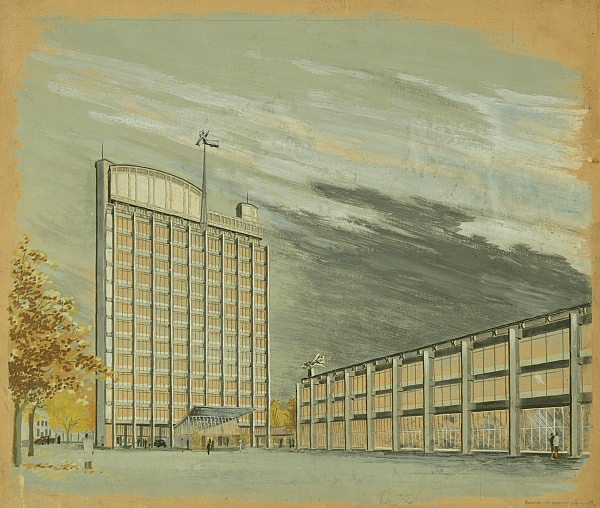Renaat Braem 1910 2010
deSingel Art City, Antwerpen, 01. 10. 2010. ŌĆō 09. 01. 2011.
In 2010 the much-discussed architect Renaat Braem would have been 100 years old. The Flemish Architecture Institute (VAi) and the Centre for Flemish Architectural Archives (CVAa) are taking the occasion of this centenary as an opportunity to hold an exhibition and a series of other events connected with the man and his work.
The curators Sofie De Caigny and Katrien Vandermarliere will be compiling the exhibition on the basis of several tensions in BraemŌĆÖs life and work: utopia and context, collectivity and individual, the visionary nature of BraemŌĆÖs spatial insights and the prominence of a biomorphic formal language and an ecological reflex. While BraemŌĆÖs attention to interactions with nature is astonishing for its contemporary relevance, his sometimes far from gentle approach to the historical fabric of the city can be quite shocking. His major social housing projects and urban planning designs are viewed in the light of these tensions, and a number of his private houses and public buildings are also featured. These designs cannot be seen as separate from the ideological discourse Braem developed in parallel. This discourse culminated in Het lelijkste land ter wereld (The ugliest country in the world) (1968). The CVAa will be republishing this book to mark BraemŌĆÖs centenary. The chronological story ŌĆō ranging from BraemŌĆÖs youth and student days to his late work ŌĆō is thus complemented by highlighting symbolic buildings and interpreting them in the light of BraemŌĆÖs own ideology.

